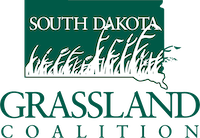Strip grazing stockpiled pasture
You might wonder why bother to strip graze stockpiled pasture instead of just turning livestock out to graze unrestricted. Jim Gerrish had a great slide in his talk he gave during a Winter Road Show asking the question “What will a cow graze on day one when you turn them out to a winter pasture vs. what will she graze on day 100?” The answer is “whatever she wants on day one and not nearly what she needs to on day 100.” Since the grass is not growing, livestock graze the best portions of the plant first and consume more stems later on. Strip grazing allows the animals to consume the best parts with the not-so-best parts of the plant together. Thus, you can get more “mileage” out of your pasture. Anyone who has grazed corn stalks knows this well. They pick the corn first, then the leaves and husks next, and then they begin to get moved. Strip grazing evens out the forage quality by moving more frequently, thus extending the grazing days.




